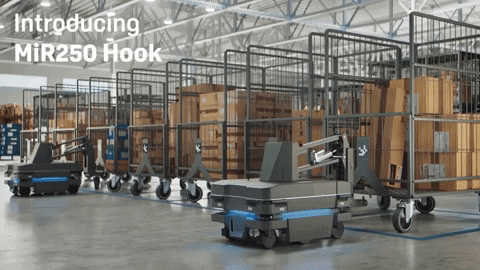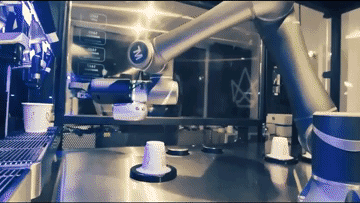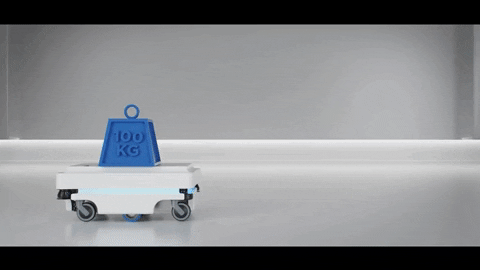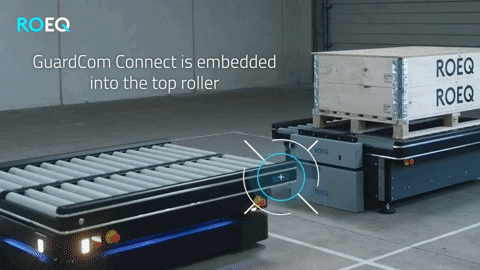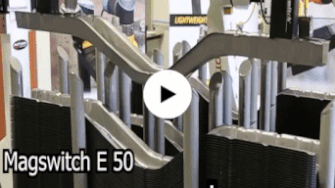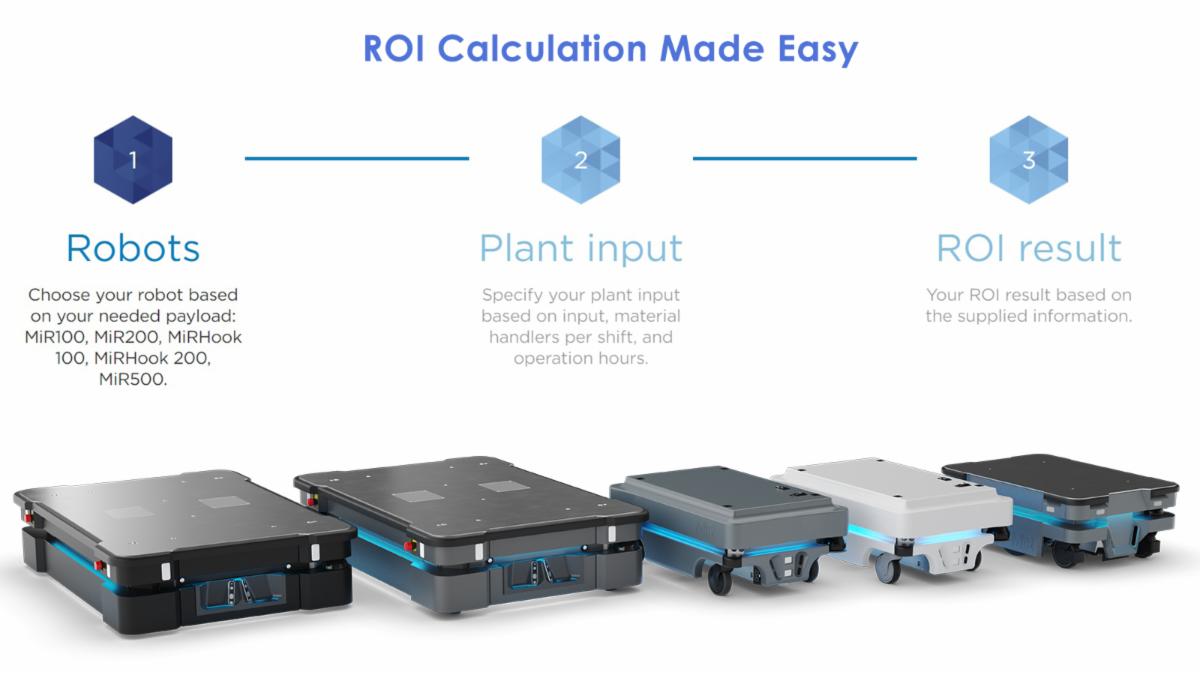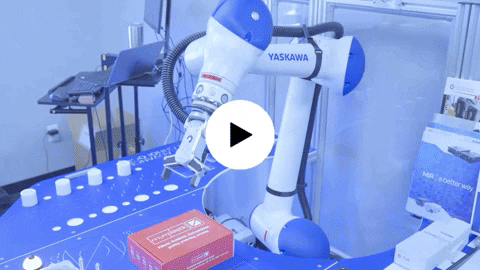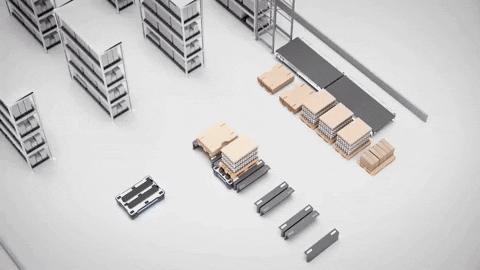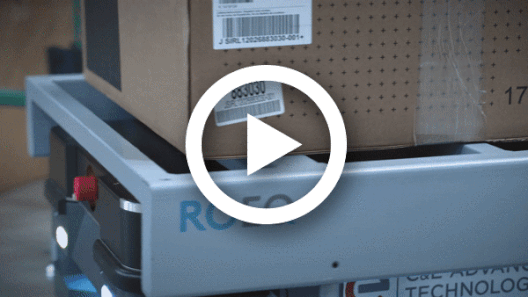MiR leading the way in AMRs
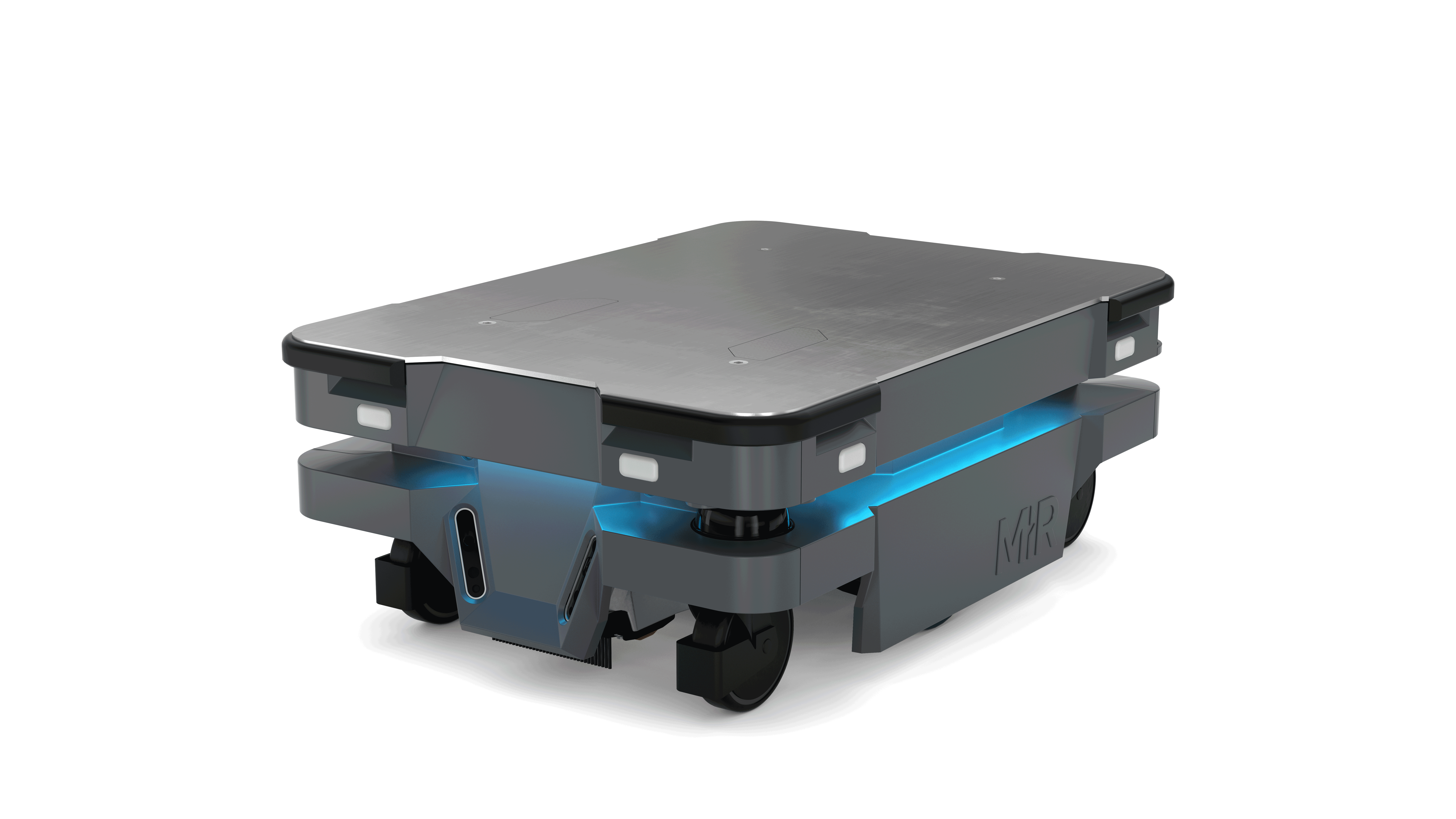 Mobile Industrial Robots (MiR) develops and markets the industry’s most advanced line of collaborative and safe autonomous mobile robots (AMRs) that quickly, easily and cost-effectively manage internal logistics, freeing employees for higher-value activities. Hundreds of mid-sized through large multinational manufacturers and logistics centers, along with several hospitals around the world, have already installed MiR’s innovative robots. MiR has quickly established a global distribution network in more than 40 countries, with regional offices in New York, San Diego, Singapore, Frankfurt, Barcelona and Shanghai. MiR has grown quickly since its founding in 2013, with sales rising by 500% from 2015 to 2016, and 300% from 2016 to 2017 and 2017 to 2018.
Mobile Industrial Robots (MiR) develops and markets the industry’s most advanced line of collaborative and safe autonomous mobile robots (AMRs) that quickly, easily and cost-effectively manage internal logistics, freeing employees for higher-value activities. Hundreds of mid-sized through large multinational manufacturers and logistics centers, along with several hospitals around the world, have already installed MiR’s innovative robots. MiR has quickly established a global distribution network in more than 40 countries, with regional offices in New York, San Diego, Singapore, Frankfurt, Barcelona and Shanghai. MiR has grown quickly since its founding in 2013, with sales rising by 500% from 2015 to 2016, and 300% from 2016 to 2017 and 2017 to 2018.
The ideal vacuum gripper for palettizing and heavy-duty material handling. Save up to 90% on operating and maintenance costs with the new VGP20 electric vacuum gripper. The gripper can pick up bulky, heavy-duty payloads of up to 20 kg while being intelligent enough to handle a wide range of items, including those with porous and non-porous surfaces. The powerful, customizable OnRobot VGP20 easily handles these thinner and less expensive packaging materials, allowing you to save considerably on both automation and shipping costs.
Automated screwdriving to boost productivity and quality has never been easier, smarter, or more cost-effective. The OnRobot intelligent Screwdriver speeds setup and programming, with everything you need right out of the box. Simply mount the Screwdriver on any leading robot arm and install the appropriate bit, then enter screw length and torque directly into the robot’s user interface. Precise torque control and embedded axis eliminate the time and cost for additional integration and ensures consistent, accurate screw insertion. Changeovers to a different screw type or size take just minutes, reducing downtime and boosting ROI.
The OnRobot Soft Gripper is able to pick a wide array of irregular shapes and delicate items, making it ideal for pick-and-place applications in food and beverage production, as well as manufacturing or packaging. The gripper is available with three interchangeable silicon-molded cups. From eggs to fruit, to bottles or cans, food and beverage automation just got easier. Like all OnRobot grippers, the Soft Gripper offers seamless integration with the robot of your choice. The Soft Gripper operates without an external air supply, for no additional costs or complexity, and none of the dust or noise generated by traditional vacuum grippers.
Autonomously Tow What You Don't Want To Lift
Collaborative robot technology has become an affordable and highly adaptable option for manufactures seeking to integrate robot workers into their labor force for increased productivity and efficiency. A cobot combined with the correct gripper can automate a monotonous picking process but choosing the right gripper can be challenging depending on the product's size, surface and geometric dimensions. A popular option is to utilize vacuum suction cup grippers that leverage internal and external air pressure to lift, hold and move items but still, some products do not have sufficient contact areas for suction-up gripping. This is where foam grippers can be very useful...
Autonomously Tow What You Don't Want To Lift
Over the past decade, companies of all sizes have experienced monumental shifts in the prioritization of their business processes. Ease of access to the global supply chain has emphasized the importance of efficient material handling. The need for fast, frequent and reliable product transportation within distribution facilities and warehouses has lead to industry changing technology like the development of autonomous mobile robots (AMRs). Now, thanks to even more innovation from MiR, AMRs have the ability to transport loads deemed too heavy or unwieldly, which can't be placed on top...
Easy Programing & Nimble Design Lead To Extreme Flexibility
The price of a robot has dropped substantially over the decades and experts expect this to continue exponentially. A majority foresee the cost dropping by 50-60% equating to less than $11,000 per unit by 2025. So if the cost are dropping, what's preventing companies from venturing into robotic automation? According to the Association for Advancing Automation (A3), companies fear a lack of flexibility within a solution once robotic automation has been implemented. The reality is that as robotic technology has improved, industrial robots have become easier to program, more versatile, more accurate and more mobile. Manufacturers no longer need to hire specialists to reprogram a system. In fact, some robots have become so easy to program — like the Techman Robot Series — they only require a laptop with an intuitive flowchart software...
AMRs Helping Businesses Battle Labor Shortages In Material Handling
Regardless of the industry, business model or operational scale, all companies speak the universal language of material handling. The success of any business depends on the safe and efficient transport of products from one area to another. Many companies utilize forklifts for their material handling processes. In fact, there are an estimated 856,000 forklifts operating in the US according to the Industrial Truck Association. This has left companies with extreme logistical challenges as they struggle to hire and maintain forklift drivers during the nationwide skilled labor shortage...
GETTING AN EXTRA SET OF EYES ON AUTOMATED PRODUCTION
The first automated pick and place application was developed in the 1930s, and it has since revolutionized the manufacturing industry. Manufacturers ran with the game changing innovation and began designing assembly lines with robotics arms in mind. As gripper technology improved, so did companies' production speeds. However, inconsistent product location and orientation continue to plague manufacturing operations. Unlike in human pick and place applications, robotic pick and place requires repeatable product positioning for successful results — until now, that is...
Circumventing Wi-Fi Instability In Material Handling
Material handling operations have improved vastly since manufacturing and distribution facilities started looking for ways to make once fully manual operations more efficient. Originally seen as a necessary but wasteful and expensive activity, automated material handling solutions—like using autonomous mobile robots (AMRs)—have improved not only how efficiently materials are transferred but also how drastically they reduced costs. However, material handling operations are now experiencing a new obstacle, Wi-Fi instability...
Automating Monotonous Processes With Robots Has Fewer Obstacles Than Ever
Robots have provided tremendous benefits to companies looking to boost the productivity of their monotonous processes. Repetitive activities are ideal for robotic automation because they eliminate the fatigue and boredom from human automation that inevitably set in and reduce efficiency. Knowing this, businesses still hesitate to switch away from human automation...
ROI For Robotic Implementation Just Keeps Getting Faster
Robotic automation has lead to game-changing benefits for facilities who have chosen to deploy robots in their manufacturing and processing operations. Notable applications include: repeatable assembly, warehouse transport, dispensing, inspection, machine tending, packaging, palletizing and more. Yet, nearly 55% of Automation World survey respondents said they still do not use robotic automation...
Accessorizing With Dress Packs Is Leading To More Productive Robotic Applications
Robotic cable management is often overlooked and saved as the last part of the design process when implementing robotic solutions, despite being cited as the number one reason for downtime in robotic applications. Common cable issues are tangling, corkscrewing, fraying and complete breaks, all of which can lead to costly downtime. Improper cable management can also restrict the movement of a robotic arm, directly affecting the process performance...
AMRs Are Changing The Way Food & Beverage Companies Operate
In an age when warehouse and distribution centers' productivity levels are tracked down to the second, workers in the food & beverage industry are pushed to help improve production and grow revenues, sometimes at the cost of their own safety. Not only can increased expectations on human output be a recipe for unsafe working conditions, but they can also lead to expensive operational costs — realized as damaged inventory or equipment, caused by forklifts or human error...
 BIG Robots For BIG Jobs Are Getting Safer
BIG Robots For BIG Jobs Are Getting Safer
More decision-makers are coming to the realization that collaborative robots — or cobots — are the future of workplace automation. They have become a friendly "face" working alongside humans, providing mechanical muscle to help drive efficiency. Some research analysts forecast a 57% growth rate in robot shipments from 2016 to 2022 worldwide. As cobots become more versatile and able to assist with larger applications, the question of employee safety always looms. To demonstrate their safety lets look at a common large scale application....
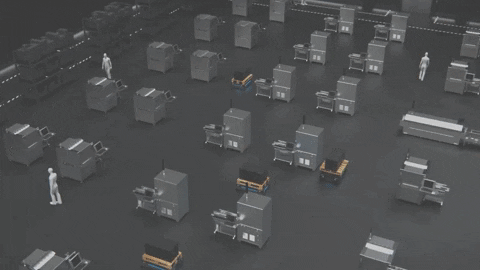 Fleet Management Software Improves Mobile Robot Collaboration
Fleet Management Software Improves Mobile Robot Collaboration
Manufacturers are recognizing the significant benefits that autonomous mobile robots can offer versus conventional logistic solutions, like forklift and conveyor systems. These conventional solutions simply don't allow the level of flexibility or adaptability that AMR's provide, and they can require expensive and disruptive infrastructure reconfiguration to meet the ever-changing demands of consumers...
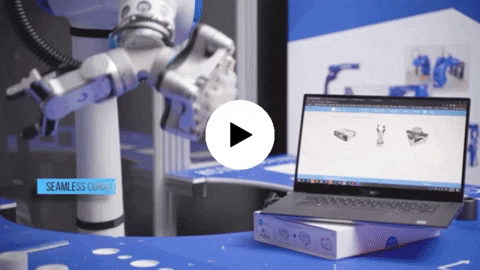 INCREASED END OF ARM TOOL EFFICIENCY IS OPENING DOORS TO NEW APPLICATIONS
INCREASED END OF ARM TOOL EFFICIENCY IS OPENING DOORS TO NEW APPLICATIONS
As robots become further integrated into all industries, savvy businesses are exploring different ways to utilize them in multiple processes. The three main categories that encompass most industrial robot operations are Material handling, Processing Operations and Assembly and Inspection. Selecting an End of Arm Tool (EOAT) that is best suited to accomplish the defined task(s) is imperative...
 From AGVs to AMRs
From AGVs to AMRs
As automation becomes the new norm for manufacturing and warehousing operations in the Industry 4.0 era, the options to help you achieve it are rapidly evolving. Technologies such as unmanned forklifts, collaborative robotic arms, improved sorting/collection, and smart conveyors are advancing as costs continue to decline; making these options more accessible for businesses of all sizes...
 Robot programming (Teaching) is getting easier and easier
Robot programming (Teaching) is getting easier and easier
As robots have evolved to become more efficient so has the process of programming them. A common misconception about robot programming is that you must be a highly skilled programmer to get a robot up and running...
 Easily connect conveyors to maximize process flow
Easily connect conveyors to maximize process flow
Real efficiency in logistics automation is achieved when the entire workflow is handled by robotics solutions that communicate smoothly with each other. That’s the vision behind ROEQ’s Top Roller that automates load and unload operations for the MiR series...
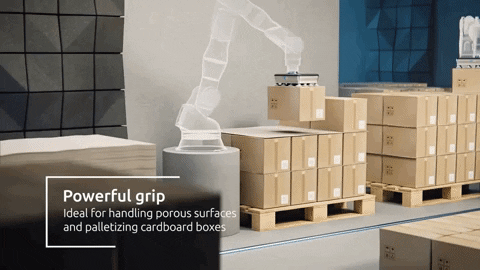 Robotic Packaging Automaton
Robotic Packaging Automaton
Packaging has been an important part of business operations for centuries. The $900 billion industry has emerged as an integral process of every business, from multi-million dollar corporations to small-town mom and pop shops. Protecting products during transit isn't an inexpensive endeavor, either...
Robotic Integration When and Where It's Needed Most
One thing that has been on the minds of many during the current market situation is how to deal with labor shortages — in manufacturing, in material handling and in food and beverage production. The Society of Manufacturing Engineers (SME) reports that 89% of manufacturers are having difficulty finding skilled workers...
 The Evolution Of The Gripper
The Evolution Of The Gripper
It has been roughly 50 years since the first readily controllable gripper was created. The Stanford arm utilized two straight-bar fingers with linear motion that slid together to grip and release objects. Since, grippers have continued their evolution from three-finger graspers to robotic hands with flexible joints, contactless grippers that use suction and flexible cups...



